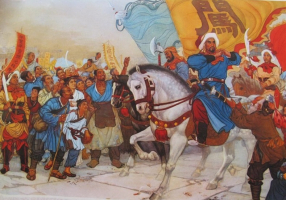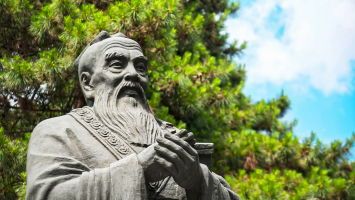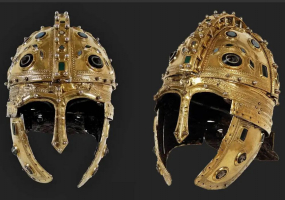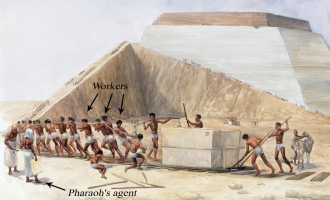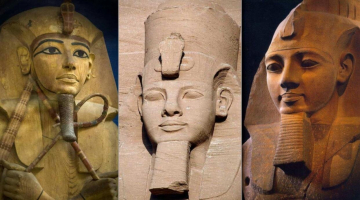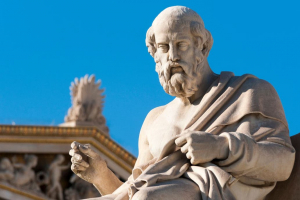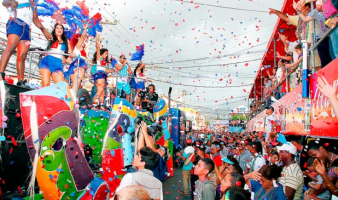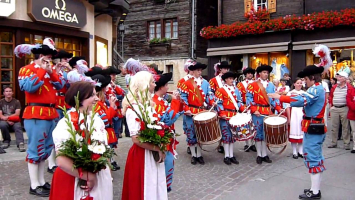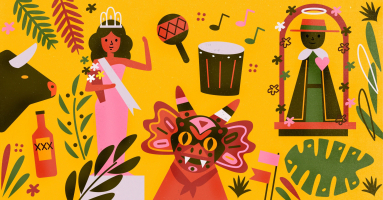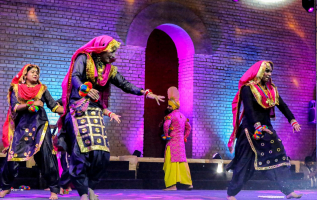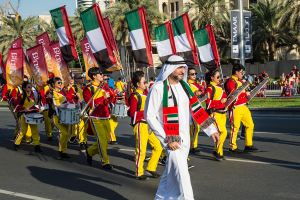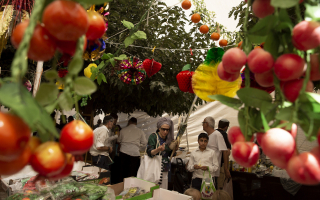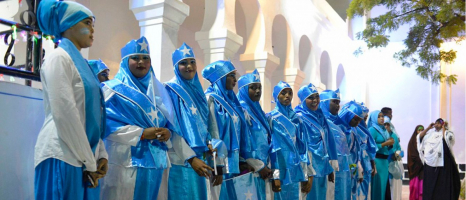Top 6 Most Popular Garments in Ancient China
Clothing in ancient China was more than just a covering for the body. They were emblems of distinction and culture, and they were required to demonstrate a ... read more...person's social rank. In ancient China, the affluent and poor dressed drastically differently. Poor people carried hemp backpacks that were long-lasting, loose-fitting, and comfortable to wear when laboring in the fields. Rich people's garments, on the other hand, were made of silk, dyed with special colors, and could be fashioned into elegant designs. Lower-class persons may face punishment if they wear silk garments. In ancient China, the color of a person's attire served as a form of identification. During the Shu dynasty, the only colors permitted for the poor to wear were blue and black and the emperor could only wear yellow. Cotton was brought to China by the Mongols during their conquest, and it was under the Yuan dynasty that cotton was first used for apparel. Chinese fashion changed with time, yet there wasn't much to wear in the past. Here is a list of the top traditional items of ancient Chinese attire.
-
As is well known, Chinese dragon embroidery was used to decorate the emperors' clothing in ancient China. It has a history that dates back about three thousand years. The costumes, Sheng Long and Xiang Long, which feature patterns of dragons with heads up and down, first appeared during the Zhou Dynasty. However, at that time, the dragon pattern was mainly used as clothing embroidery and was known as Long Yi rather than Long Pao.
Even though the emperors wore the linked robe in leisure time after the Qin and Han Dynasties, there was no pattern of the dragon, simply the yellow color. The dragon motif first appeared during the Yuan and Ming Dynasties. During the Qing Dynasty, Long Pao became the official use name and was included in the clothing system. The predominant color of the dragon robe of the Qing Dynasty was yellow, and it was embroidered with a golden dragon and a beautiful cloud. The twelve patterns were distributed during the patterns of dragon and cloud.
It has developed into a crucial component of Chinese culture. The dragon robe worn by the emperor during celebrations during the Qing Dynasty was considered an auspicious outfit and was only appropriate to wear during those celebrations. Emperors should wear court attire that is higher than the dragon robe if an important person is visiting to discuss significant matters with them instead of the dragon robe.
According to historical documents, the dragon robe of the time was embroidered with nine dragons. Only eight dragons can be discovered in the real robe and the photographs, and they are stitched in the front chest, back, front knees, and behind, as well as two shoulders. There are just eight dragons in total. Some claim that the emperor is the left dragon.
In fact, foreigners studying in Chinese schools in China should be aware that the left dragon motif is stitched in the interior of the front of the garment, hidden from view. Because nine is an odd number and is challenging to make symmetrical in costumes, it is chosen because it represents the most honorable ruler.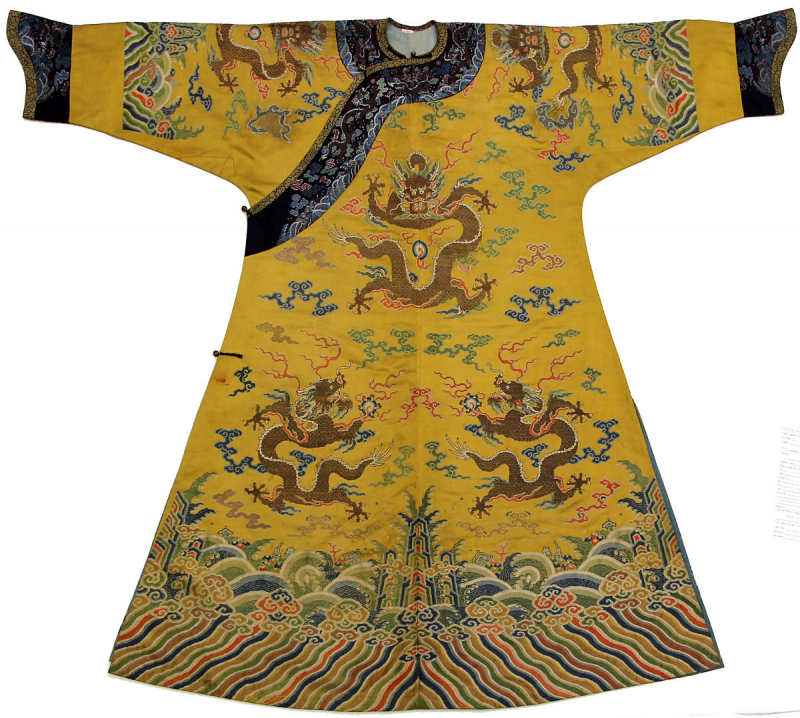
The Metropolitan Museum of Art Dragon Robe - The Metropolitan Museum of Art 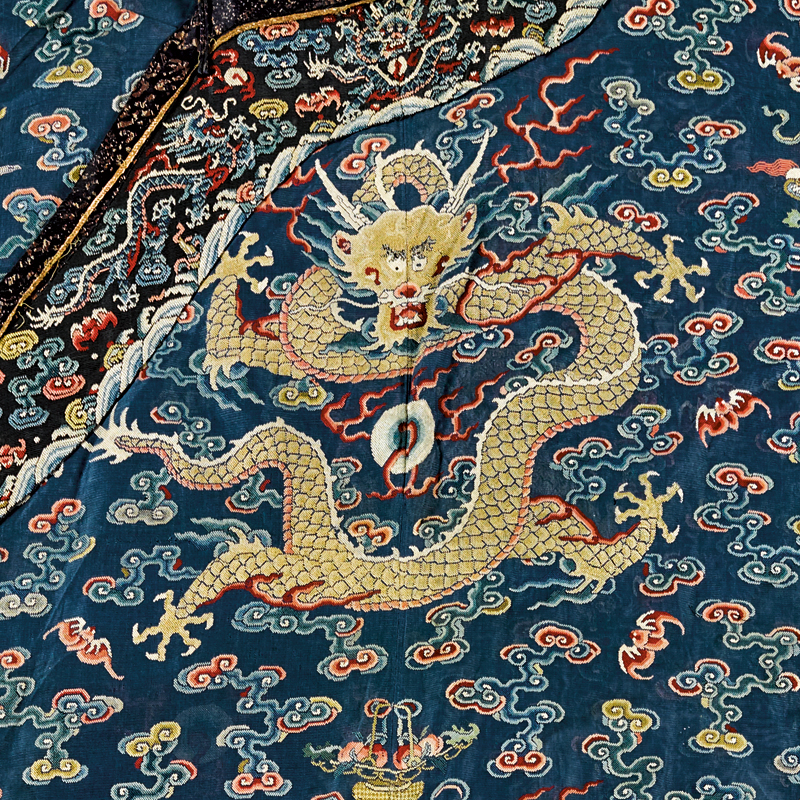
Dragon Robe Decoded - Sotheby's -
One of the traditional styles of Chinese clothing is called hanfu, which translates to "Han clothes." It was banned at the start of the Qing Dynasty after more than three millennia of serving as the distinctive apparel for the Han ethnic group (1644–1912). Before the Qing Dynasty, when the Manchus ruled, the Han people wore what is referred to as "Hanfu," which was their traditional attire. When Chinese people refer to hanfu in recent years, they typically refer to a long, flowing robe with loose sleeves and a belt at the waist. However, the word "Hanfu" encompasses a wide range of clothing designs from several dynasties.
Hanfu has a loose yi (/ee/) "upper garment" with sleeves and a shang (/shung/ "lower garment") that resembles a skirt. Jade was frequently used to embellish the belt sash. It is seen as a representation of true Chinese culture, evoking the ritualistic, musical, and ethical values of Confucian intellectuals.
According to mythology, Hanfu dates back more than 4,000 years to the time that Leizu, the wife of the fabled Yellow Emperor (2698–2598 BC), began producing silk garments. However, no archeological proof has been found to back this idea.
Hanfu in the Xia and Shang Periods (2070–1046 BC)
Top-bottom clothing was popular during the Xia Dynasty (2070–1600 BC). The Shang Dynasty (1600–1046 BC) established the Hanfu's fundamental form. The yi was a knee-length tunic with small cuffs that was fastened by a sash. The shang was a brief skirt that reached the ankle. An apron called a bixi, which means "cover the knees," was worn outside. There were just two fundamental hues, red and green, due to outdated technology.
Hanfu in the Zhou Dynasty (1045 – 221 BC)
Kings of the Western Zhou Dynasty established a rigid hierarchical system based on blood ties and family-based ethical standards during the Western Zhou dynasty (1045–771 BC). Due to the significant distinctions between the nobles and the common people, clothing was employed as a status symbol to emphasize their privileges, which had a significant impact on clothing and ornamentation.
The Eastern Zhou period (770 – 221 BC) saw the emergence of Shenyi (one-piece garment) and Mianfu (religious court attire used by ancient emperors and officials). Hanfu sleeves were made wider, and a belt or jade ornaments were used to close the outer tunic. The crossover collar became visible. Clothing from other ethnic groups, such as hufu (clothing from northern ethnic groups such as the Huns), was formed and merged with Hanfu.
Hanfu in the Qin and Han Dynasties (221 BC – 220 AD)
The Hanfu's details were seldom changed during the Qin and Han dynasties. The shenyi was remained the preferred type of attire for both Han and Huns. A new type of formal attire, the pao (袍), a linen robe, predominated. During the Qin Dynasty, third-rank officials and higher were required to wear green silk pao and shenyi, while the common people wore white linen pao.
Hanfu in the Sui, Tang, and Song Dynasties (581 – 1279)
The Sui and Tang dynasties were "China's golden age," during which time the Han culture expanded. Based on their forefathers, a dress style combining Hanfu and Hufu components became popular. Because women were less constrained by Confucian ethical rules, their clothing grew looser and more exposed than their predecessors. The clothing of the Song Dynasty was essentially a continuation of the Tang Dynasty's style. More embellishments and needlework were added. Women of the Song Dynasty wore beizi (cape-like garments).
Hanfu in the Yuan Dynasty (1279 – 1368)
The Yuan Dynasty was China's first foreign-ruled dynasty. During this period, the Hanfu acquired elements of the Mongolian kings' national dress. Men wore both the classic Han-style round-collar pao and the Mongolian zhisunfu (jisum in Mongolian). This featured a knee-length yi (top garment) with thin sleeves and a short shang (lower garment).
Hanfu in the Ming Dynasty (1368 – 1644)
The Ming Dynasty was the final dynasty led by the Han. The emperor desired to revive the entire Han culture and tradition, including all Tang Dynasty dress trends. However, many Mongolian-style garments and headwear persisted, as did wardrobe alterations from the Song dynasty. Confucian norms were re-popularized, and women's clothing became more restrictive. The upper outer garment was made shorter, while the bottom garment was made longer, and the outer coat was made longer to minimize the length of the exposed skirt.
Hanfu in the Qing Dynasty (1644 – 1912)
When the Manchus took over China in 1644, there was a drastic shift in hairstyles and attire. At first, the Manchu leader compelled all Han people to wear the Manchus' long robe or cheongsam, but this restriction was soon relaxed. In the late Qing Dynasty, three forms of clothing coexisted: Han traditional garments (i.e. Hanfu), Manchu clothes, and half-Western-style clothes.
Hanfu's Influence in East Asia
Hanfu served as a metaphor for conventional Chinese culture. It also had a significant impact on the clothes of other Asian neighbors, such as the Vietnamese Áo giao lĩnh, Korean hanbok, and Japanese kimonos. In the fifth century, the Japanese began assimilating Chinese attire. The kimono is traditional Japanese attire. It is also known as gofuku, which means "Wu's garment." Wu was one of the Three Kingdoms of China (220–280).
Hanfu in Modern Times
After falling out of favor for more than 400 years, several Han ethnic groups called for a rebirth of Hanfu as part of a movement that the public should be proud of their Chinese culture. Wearing Hanfu, according to many enthusiasts, gives them a strong sense of national identity. Many Chinese institutions have a Hanfu Society whose members wear Hanfu to celebrate traditional Chinese festivals, and they take advantage of the opportunity to show off their Hanfu costumes to others.
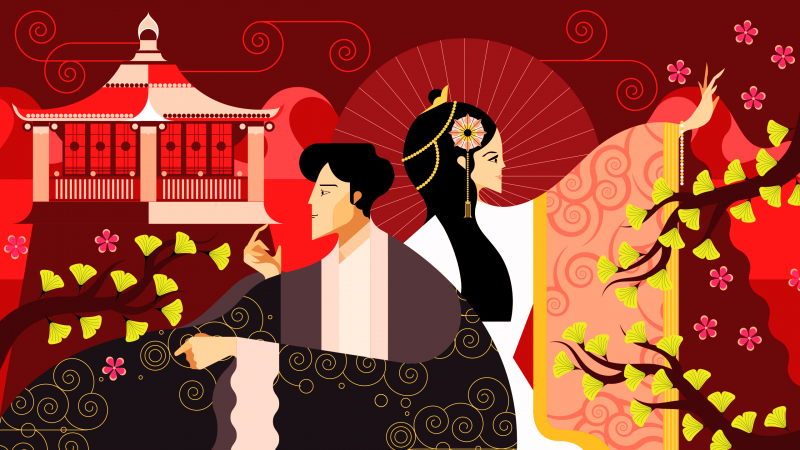
Hanfu: Centuries-old Chinese fashion is making a comeback - CNN Five Thousand Years's Channel -
Chang Pao was a type of men's clothing that was worn below the knees and had a round collar band. The long gown had no collar, narrow horseshoe-shaped sleeves, buttons along the left front, four slits, and a fitted waist. The slits could improve men's freedom of movement during horseback riding. Men wore thin cotton Chang Pao in the summer and warm cotton Chang Pao or a fur-lined cloak in the winter.
Originally, Chang Pao was the standard Manchu clothing, complete with horseshoe-shaped sleeves and four lower side slits. Manchu originated in the north, where the winters were much colder than in central China. Men would roll up these horseshoe sleeves while hunting or going about their everyday business. They were made to cover the hands in the winter. As a result, every male clothes throughout the early Qing Dynasty had horseshoe-shaped sleeves. They would roll their sleeves up when going about their daily activities, much like the Manchu. The sleeves had to be lowered to cover the hands when the imperial officers bowed to their higher officers or the emperor.
Meanwhile, the Manchus were known as folks on the journey, thus their gown featured four slits, one on each side, front and back, reaching the knees. It was form-fitting and quite warm. When people went hunting, the long gown, which was fastened with a waistline, could hold substantial food and equipment.
Chang Pao evolved with the shifting of lifestyles and the blending of Han and Manchu cultures, as the horseshoe-shaped sleeves were abandoned and the four-slit design was reduced to two or even none. However, horseshoe-shaped sleeves and a four-slit form could still be found on Qing official robes and those of high status.Men wore typically blue, gray, or green long robes, while women wore white. Some women added lovely silk ribbon laces to the front, neckline, and sleeve margins of their dresses to adorn them.
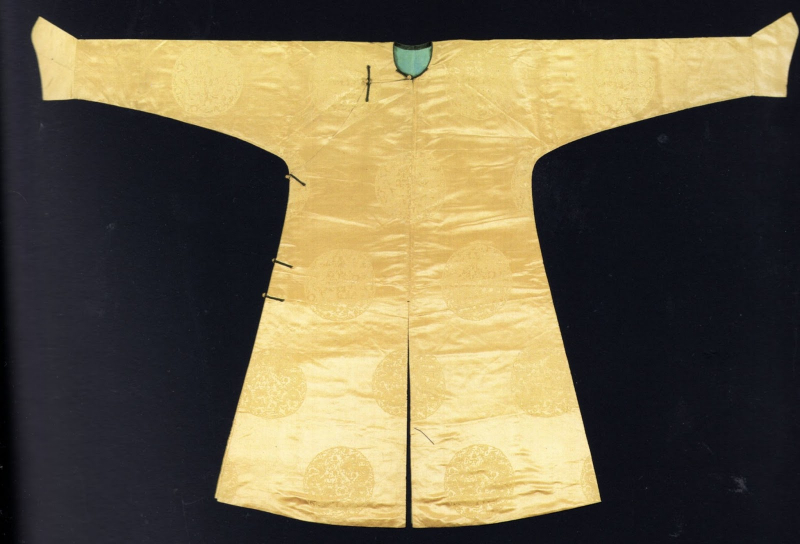
FolkCostume&Embroidery 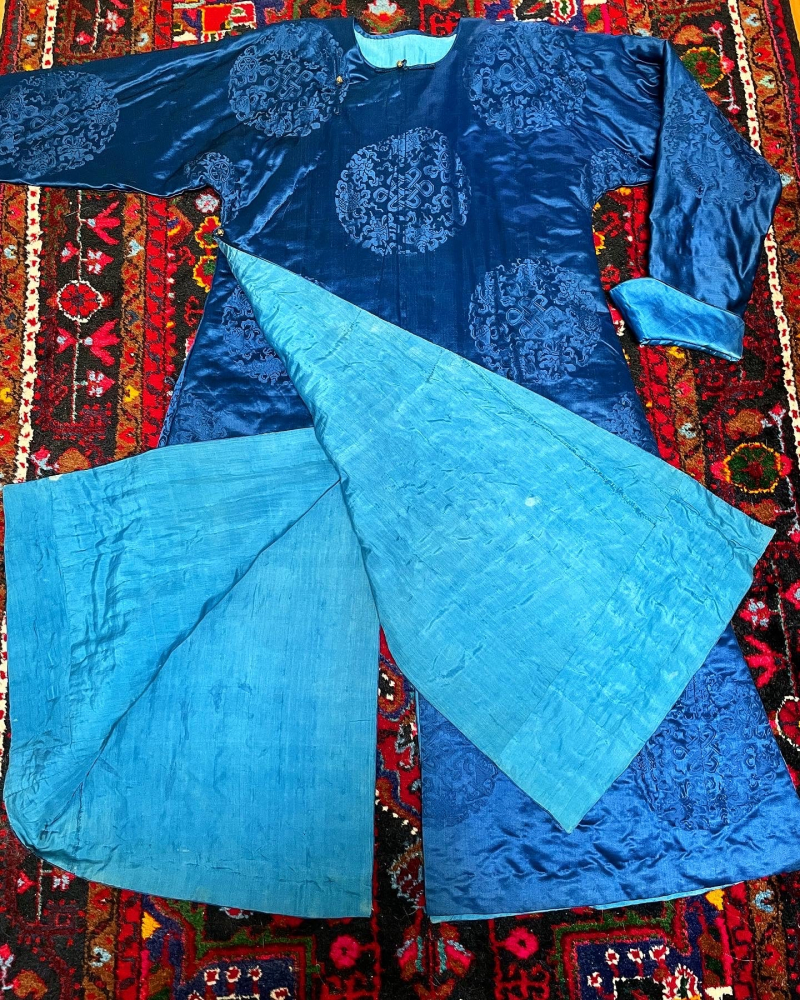
Chinese Chang Pao Silk Handsewn Mens Robe. L – Rudston-Brown Vintage -
A popular traditional Chinese garment is called Pien Fu. There were two components to this ancient Chinese ceremonial outfit. The other is a long tunic, while the first was a skirt. Each of the colors used to create this distinctive outfit had a particular meaning. For example, the colors green and red stood for prosperity and the season of summer. This clothing was worn with the pine - a cap with a cylindrical shape.
The upper garment, known as jiangshapao, was red and reached all the way to the knees. This was often worn over a red hongchang skirt that stretched all the way to the ankles. Wearing a qun under an upper garment was reserved for ceremonial events. The wearer wore a crimson bixi over the hongchang. An inner garment known as zhongdan was worn beneath the crimson outer garments. A yugui was held in the wearer's hands and was decorated with yupei, daxiaoshou - a ribbon-like adornment - and the dadai belt. The bian, also known as pibian, was a cylinder-shaped guan (headwear) that rounded out the ensemble.
The royal court donned this two-piece outfit as a ceremonial garment. When conducting official business or meeting with court officials, the emperors donned the bianfu, which was only second to the mianfu in the Zhou Dynasty.
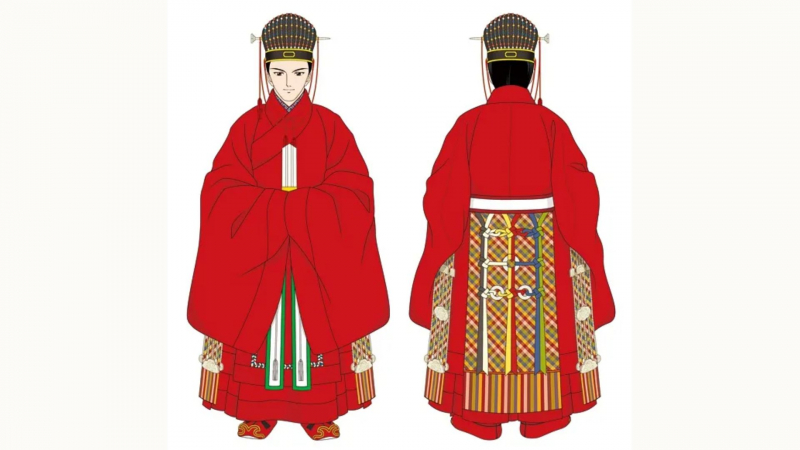
Interact China 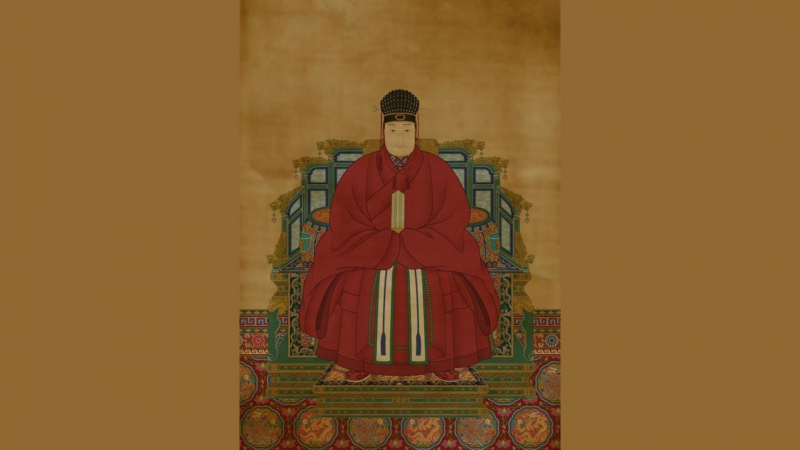
Wikipedia -
The shenyi was a single long robe, as opposed to a top and bottom. The shenyi's structure, however, consists of two parts: a yi (the upper garment) and chang (the lower garment), which are joined to create a single robe. The paofu is a one-piece robe with the lower and upper parts cut from a single piece of fabric; the shenyi differs structurally from this garment. Additionally, a typical shenyi was constructed with twelve cloth panels that were stitched together.
The shenyi and its components existed prior to the Zhou period, having initially appeared during the Shang dynasty. People of the Shang and Western Zhou eras, on the other hand, wore a set of clothing known as yichang, which consisted of a jacket called yi and a long skirt called chang. The yi and chang were sewed together to form a robe for convenience; this combination resulted in the shenyi, which was produced during the Zhou period. From the Zhou through the Han dynasties, the shenyi became the primary form of Hanfu robe, remaining popular. The loose shenyi with wide sleeves was popular among the aristocracy, elites, and members of the royal families from the Spring and Autumn period through the Han dynasty. The loose shenyi was made for the top echelons of society, particularly for ladies who desired to avoid showing off their body parts when walking. It wrapped around the body from front to back and lacked a front-end slit. In a time when the kun was not yet widely accepted by the populace, the design of this wrap-style shenyi was crucially necessary. The aristocracy's obsession with layered, loose-fitting clothing also demonstrated their desire to set themselves apart from the laborers and served as a marker of their high rank. The shenyi had evolved in forms by the Han dynasty; it then further developed in the Han dynasty, with subtle differences in styles and shapes appearing. Following the Han dynasty, the shenyi declined in favor until it was restored during the Song dynasty.
The Western Zhou dynasty had tight norms and regulations governing its citizens' daily apparel based on their social position; these regulations also covered the material, shape, sizes, colors, and decorative patterns of their garments. The Zhou dynasty's hierarchical system based on social status, gender, age, and situation also influenced the shenyi. Despite these complex regulations, the shenyi remained a basic form of garment that served the needs of all classes, from nobles to commoners, old to young, men to women; and people would thus express their identities on their outer garments through recognizable objects, decorations, colors, and materials. Nobles wore an ornamented coat over the shenyi, whereas commoners wore it alone.
There were still stringent laws and norms governing the attire of all social groups throughout the early Eastern Zhou dynasty, which were designed to preserve social differentiation between members of various classes.
The shenyi was a moderately formal style of attire during the Warring States period. The front of the shenyi, which represented the Warring States Period, was designed to be stretched and wrapped around the torso numerous times. The Silk painting depicting a man riding a dragon and the Silk painting with the female figure, dragon, and phoenix designs both show wrapping-style shenyi for men and women. Both paintings were discovered in a Chu tomb during the Warring States period (5th century BC), in Changsha, Hunan Province.
During this time, linen was frequently utilized as a material, but when shenyi was fashioned into ceremonial clothing, black silk was used instead. Given that it was both practical and basic in design, it was worn by both the literati and the soldiers. The dadai or shendai silk ribbon, on which a decorative item was fastened, was also used to tie the shenyi in the front, just below the level of the waist.
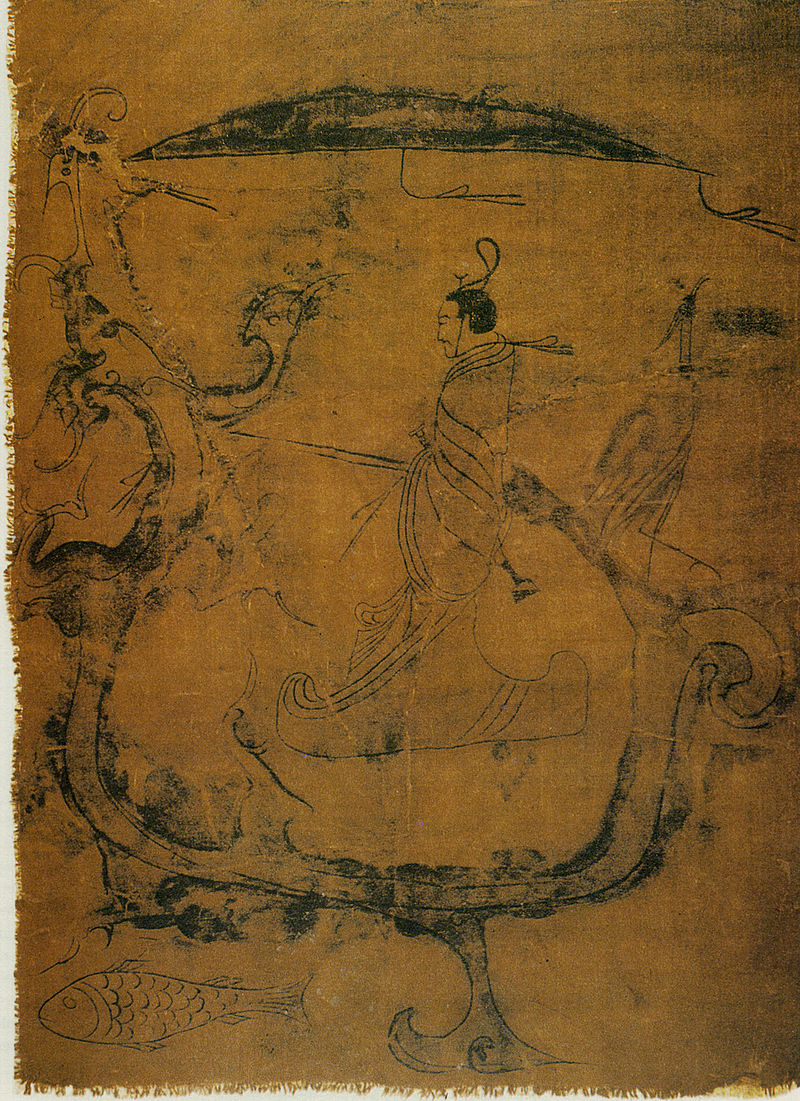
Man wearing a shenyi, from the Silk painting depicting a man riding a dragon. - Wikipedia 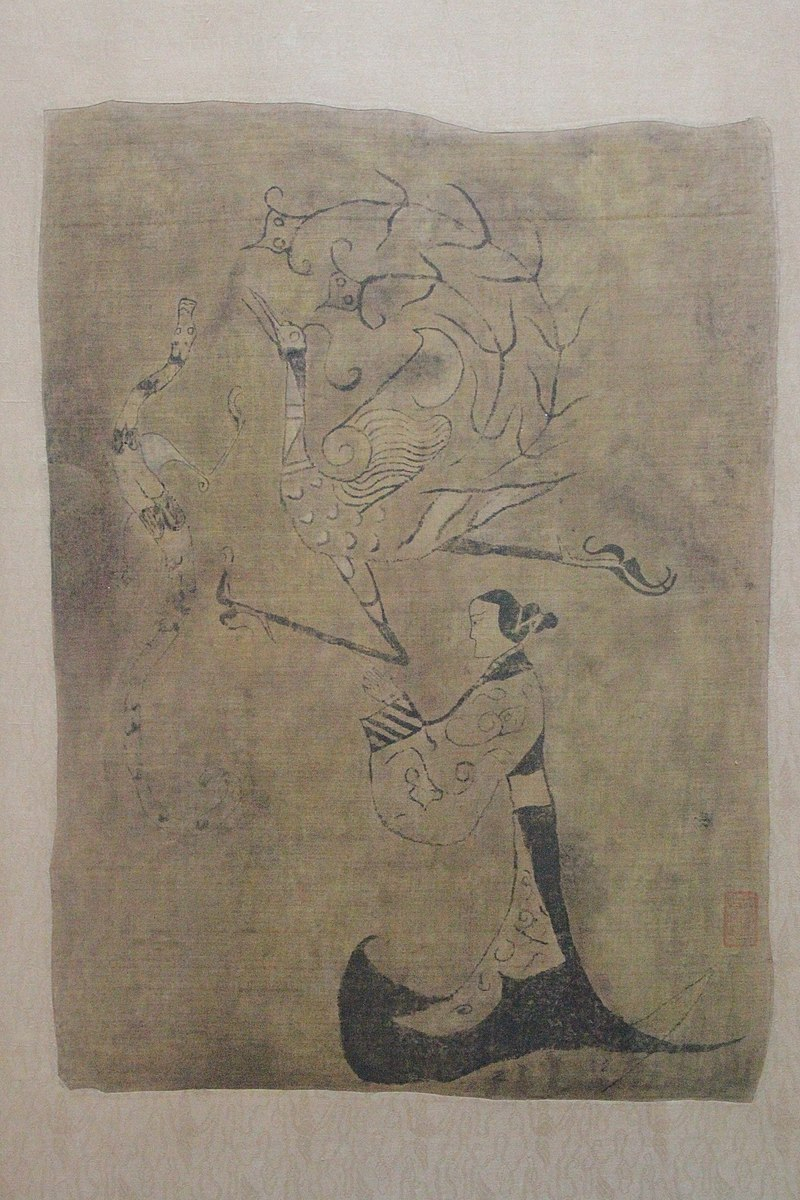
Woman wearing a shenyi (side view), from the Silk painting with female figure, dragon and phoenix patterns - Wikipedia -
Lanshan is the traditional Chinese attire for men. The lanshan has been worn since the Tang Dynasty. The panling lanshan along with the futou was used as the Tang dynasty attire of scholars and officials. The scholars' attire in the succeeding dynasties followed the style of the panling lanshan of the Tang dynasty. It is also a formal attire worn by scholars and students taking the imperial examination in Ming Dynasty.
The term "Lanshan" refers to a type of long garment in the history of ancient Chinese traditional dress that is cut in one piece at the top and bottom (Tongcai) and has a Hanglan (a seam at the Lanshan's knee) at the hem. The old Shenyi Zhi, on which Lanshan is based, had its waistline relocated to the hem and Henglan inserted close to the knee. Ancient people adhered to the upper Yi and lower Chang systems, and the ceremonial system was designed to represent their reverence for the natural world and their efforts to establish order.
Lanshan first appeared in the Northern dynasty and was further developed and standardized in the Tang dynasty. It absorbed the northern dynasty costume system during the Tang Dynasty and changed the collar shape from a cross collar to a round collar and the sleeve design from broad sleeves to narrow sleeves. Lanshan was worn by scholars and bureaucrats alike.
Lanshan inherited the preceding dynasty's style and grew quickly during the Song dynasty. Lanshan is the most common type of men's informal clothing. Scholars and officials progressively returned to the old style of the wide robe and big sleeves, influenced by the preference for civilization over warfare. Lanshan is affected by this design as well, and the sleeves get wider and wider. The majority of the clothing was white or off-white.
Lanshan with a round collar became more popular during the Ming Dynasty. During the Ming Dynasty, the main clothing code for Shengyuan (students) was Confucian scarves and Lanshan. Shengyuan scholars, also known as Xiucai, passed examinations at various levels during the Ming and Qing dynasties.In the Ming dynasty, Lanshan first appeared without Henglan. They are also known as "blue Shan" since the majority of them are fashioned of blue cloth. The Henglan evolved to have wide edging on the hem from the Lanshan, which featured both side slits and a double side hem. The Lanshan had dark blue or black edging on the collar, sleeve edges, side placket, bottom, and double hem.
Scholars and Shengyuan have traditionally dressed in lanshan. Additionally, they might be utilized during the ritual for coming of age. In accordance with historical records, the local authorities may also don Lanshan during the sacrificial ceremony for Confucius.
The ceremonial wear known as lanshan is still worn in modern culture to display one's position as a student and level of education at ceremonies such as graduations and coming-of-age rituals.
Lanshan is typically worn with a scarf, such as a Confucian scarf, Jinshi scarf, Wusha Mao, etc. The Confucian scarf has a sloping top and is low in the front and high in the rear. A Sitao (silk fabric waist belt) can be used with the outfit.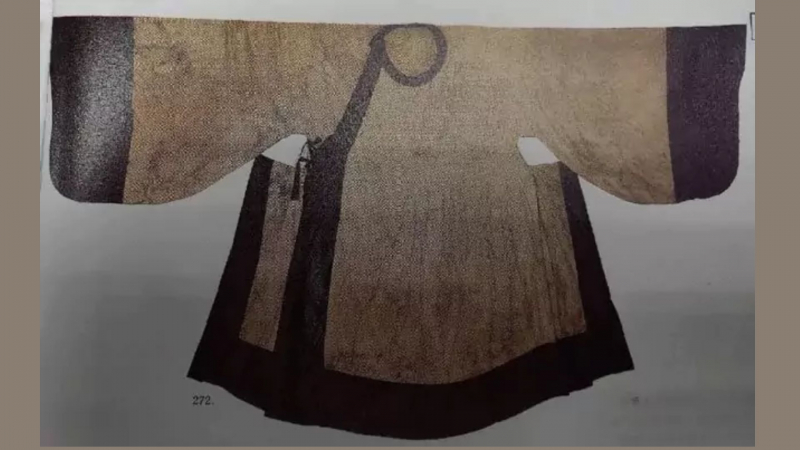
Ming-style Lanshan - newhanfu.com 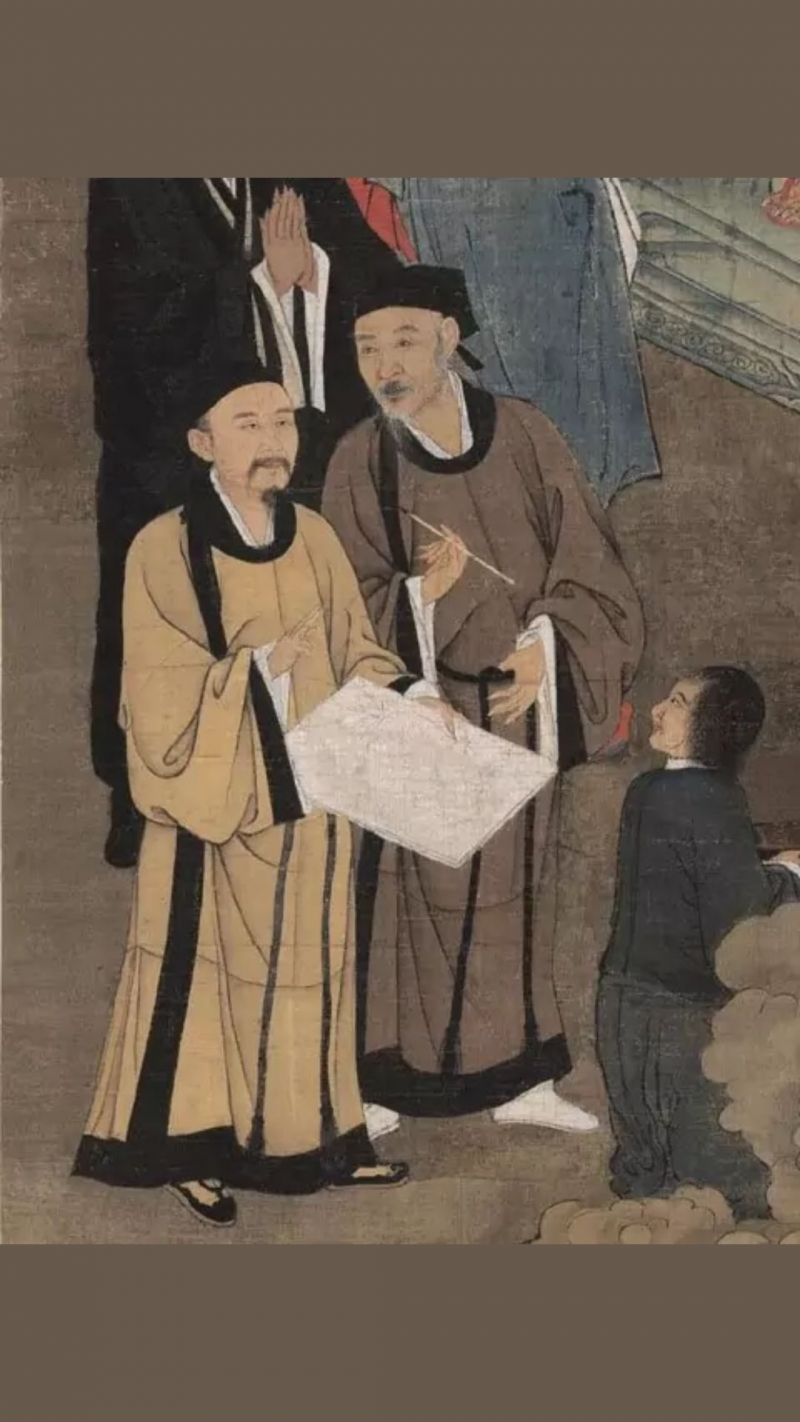
Song-style Lanshan - newhanfu.com








